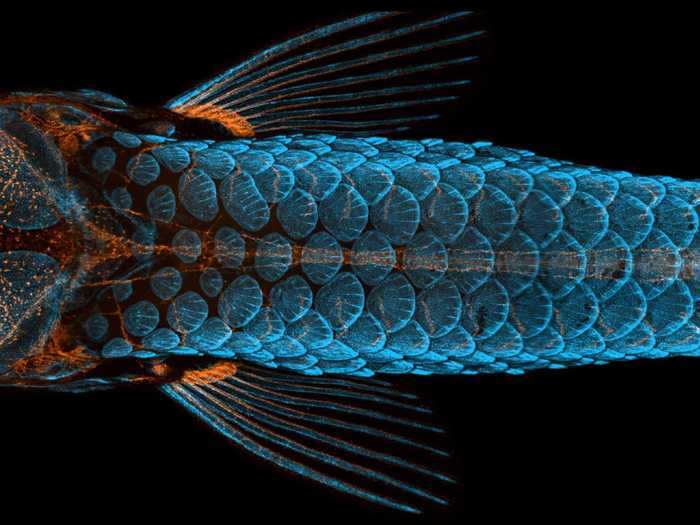
A bogong moth.Ahmad Fauzan/Nikon Small World
If there's one thing we've learned from the coronavirus pandemic, it's a newfound respect for the very, very small.
But as dangerous as the microscopic universe can seem, it's also rich with stunning shapes, brilliant colors, and often mysterious biological and physical processes.
In that spirit, Nikon has released the winners of Small World: the camera company's 46th microscopy, or microscope photography, competition.
Judges Dylan Burnette, Christophe Leterrier, Samantha Clark, Sean Greene, and Ariel Waldman reviewed more than 2,000 entries from scientists, artists, and hobbyists from 90 countries around the world. All have to be taken with microscopes using optical imaging techniques. They include a rainbow snail tongue, a self-replicating worm, and – appropriate for the Halloween season – a spooky-looking bat embryo skeleton.
Here are the best microscope pictures of the year and what they show.

The photo isn't just gorgeous and technically perfect: It also led researchers to a groundbreaking discovery.
The orange in the photo represents the zebrafish's lymphatic system, the network of vessels that carry white blood cells through the body. Previously, scientists thought that only mammals had lymphatic vessels inside their skulls. But with this photo, photographers Daniel Castranova and Bakary Samsara at the National Institutes of Health show that zebrafish have those vessels too.
Because fish are so much easier to raise and conduct experiments on than mammals, this discovery could revolutionize research around treatments for brain-related diseases, like Alzheimer's disease and brain cancer.


Here are the rest of the 20 winners:

















 I spent $2,000 for 7 nights in a 179-square-foot room on one of the world's largest cruise ships. Take a look inside my cabin.
I spent $2,000 for 7 nights in a 179-square-foot room on one of the world's largest cruise ships. Take a look inside my cabin. Colon cancer rates are rising in young people. If you have two symptoms you should get a colonoscopy, a GI oncologist says.
Colon cancer rates are rising in young people. If you have two symptoms you should get a colonoscopy, a GI oncologist says. Saudi Arabia wants China to help fund its struggling $500 billion Neom megaproject. Investors may not be too excited.
Saudi Arabia wants China to help fund its struggling $500 billion Neom megaproject. Investors may not be too excited. Catan adds climate change to the latest edition of the world-famous board game
Catan adds climate change to the latest edition of the world-famous board game
 Tired of blatant misinformation in the media? This video game can help you and your family fight fake news!
Tired of blatant misinformation in the media? This video game can help you and your family fight fake news!
 Tired of blatant misinformation in the media? This video game can help you and your family fight fake news!
Tired of blatant misinformation in the media? This video game can help you and your family fight fake news!

Copyright © 2024. Times Internet Limited. All rights reserved.For reprint rights. Times Syndication Service.